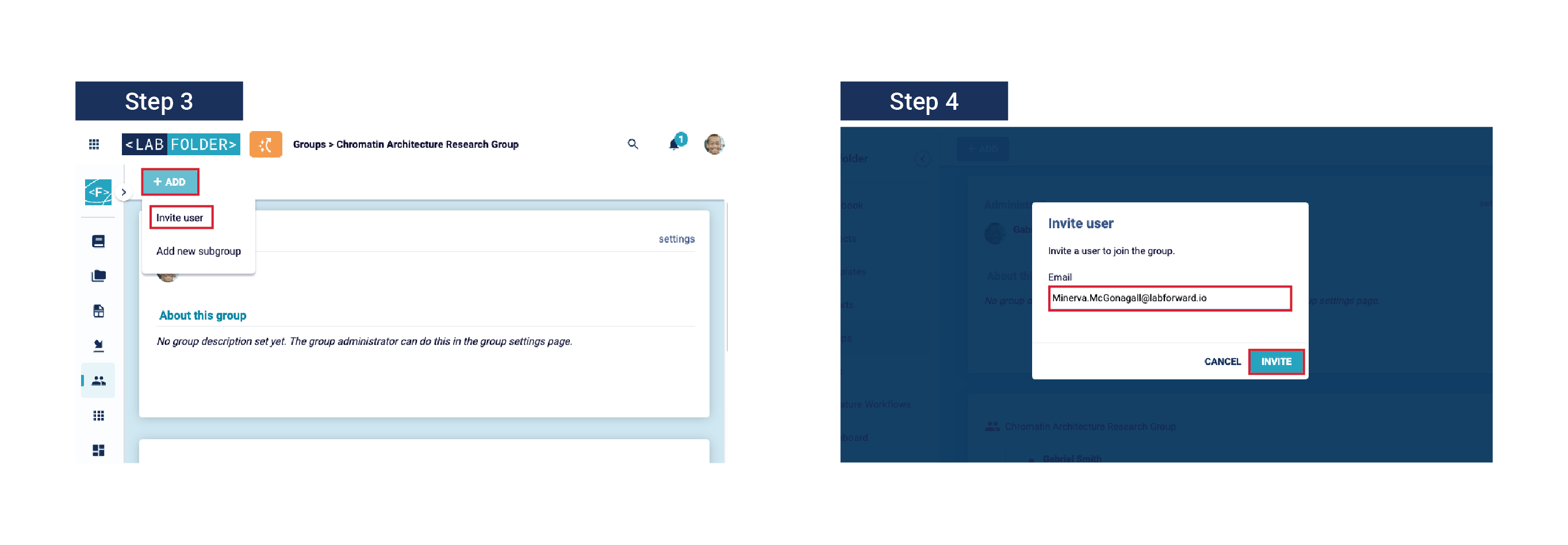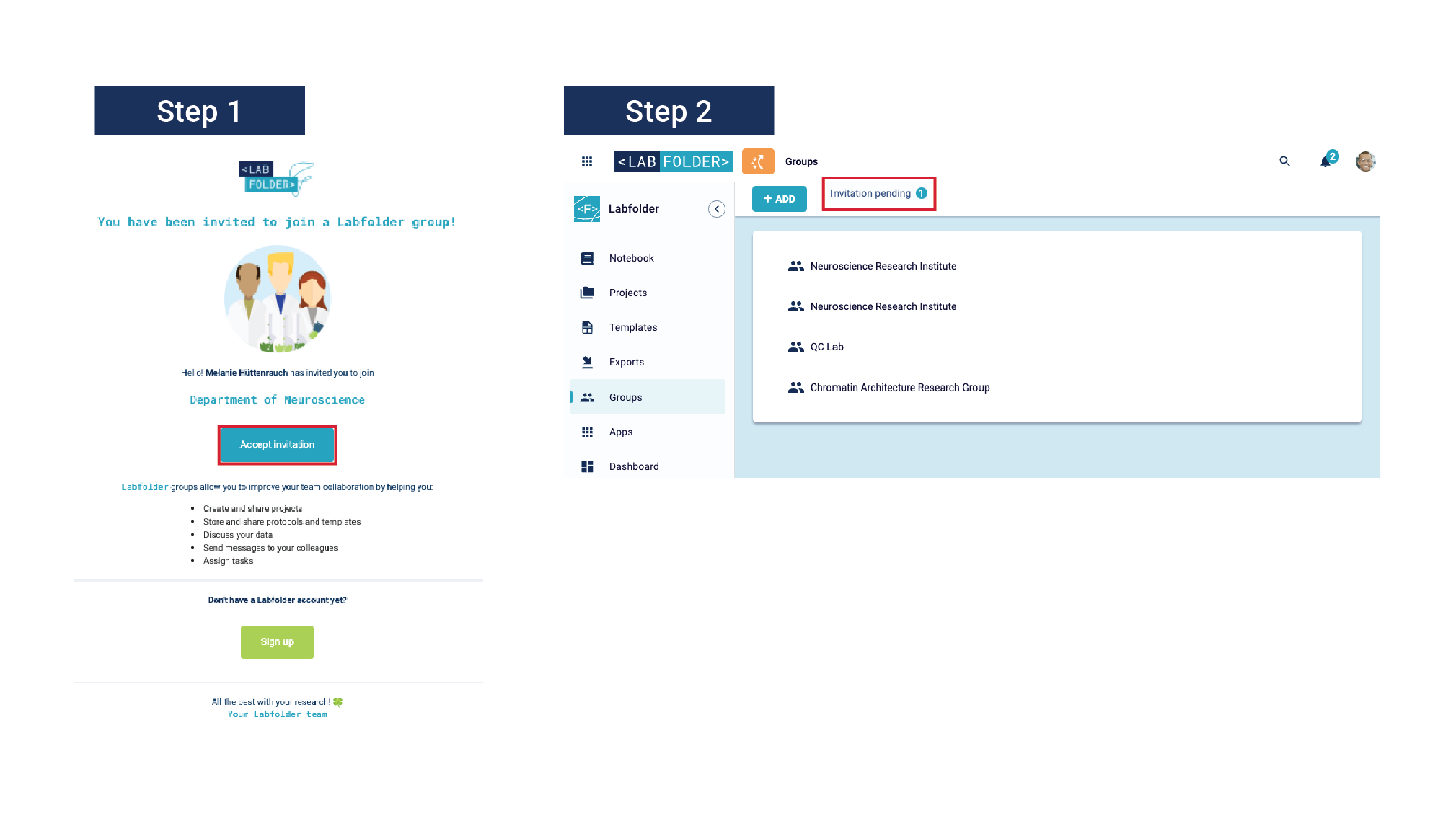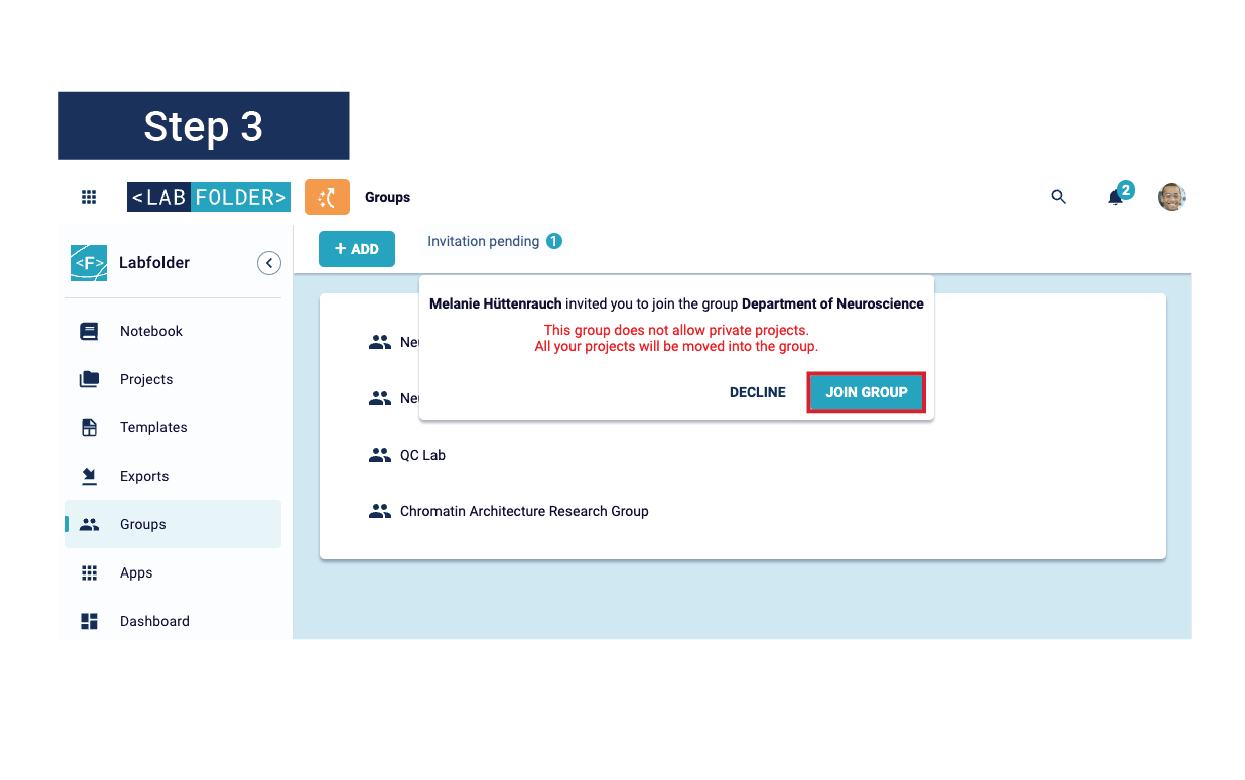Latest News:
New Support Material Available!
To download your MPG Welcome Packet please visit the How to get started tab.
To download your ELN transition guide or Labregister guide please visit the Self-training material tab.
Labfolder is an electronic lab notebook that allows you to organize, record and share data obtained in a laboratory on a secure platform. The Max Plank Digital Library (MPDL) licenses Labfolder via a central contract so that researchers can focus on its use instead of dealing with contracting and licensing costs. The official announcement, as well as a link to the press release, can be found here.
Integrate all your data directly into your records
Search and filter through full texts to find entries
Customize entries by dragging and dropping different elements
Collaborate with colleagues
Create templates and protocols for recurring workflows
Set up multiple databases to organize laboratory materials
Securely encrypted via SSL and backed up regularly
To see a full list of features, click here.

Doctoral Student
"We can keep a nice and organized track of our work and we are able to find things that we did in the past, even if the respective group member has left the group in the meantime."
Could you tell us a bit about your research and what you find exciting about it?
I am working in a research field that combines optics (microscopy, nano optics, laser technology) with biology (cellular interaction, viruses, DNA, proteins). I find it exciting that I work in a chemical, biological, and optical lab on a daily basis and combine all these fields to learn more about nature. I am working on my PhD thesis in the field of biophysics.
We just started to use Labfolder in our group as an electronic lab notebook. We document our experiments and research with Labfolder. The type of work that is carried out and needs to be documented is very broad, as we have physicists, biologists, and chemists working with the tool.
We can keep a nice and organized track of our work and we are able to find things that we did in the past, even if the respective group member has left the group in the meantime. We don't need to tediously search for entries in old hardcopy lab books or end up redoing the same experiments over and over again.
If you have a large group and work in different types of work, organisation can be tricky. Our experiments usually evolve around a specific optical setup. That is why we structured actual laboratory room numbers with folders and setups with sub folders. This allows to easily find notes about a certain project.
Additionally, we adapted the concept of a material database in Labfolder for large devices that we share within the group (like an atomic force microscope or a sputtering machine). When someone creates an entry, he can tag such an device in it. This allows for a easy search if you want to find all the things you (or also other users) did on a specific device.

Postdoctoral Fellow
"Starting with Labfolder was an important step in renewing our entire documentation system which allows us to distribute information in an easy way to new people in the lab."
Could you tell us a bit about your research and what you find exciting about it?
The focus of our research is to understand mechanisms that allow bacteria to adapt and differentiate in response to environmental changes. These include rapid changes in gene expression, regulation of cellular locomotion and cell cycle regulation. To investigate the underlying mechanisms, we make use of genetic manipulation and fluorescence live cell imaging as well as a variety of biochemical assays. This information is a prerequisite to understand how bacterial regulate these processes in space and time.
With Labfolder we have completely replaced our hand-written lab notes to a modern and sophisticated documentation system. We use Labfolder for our daily work by documenting experiments and results as well as sharing protocols within the different subgroups of the lab. Finally, we implemented Labfolder as a tool for inventory management of genetically modified bacterial strains, plasmids and proteins.
One important feature of Labfolder is that it keeps track of a lot of information. In addition it finds the single plasmid map you are looking for in many pages of documentation with its advanced search option. With this you spend less time on looking through pages manually and can spend more time on the important things in your research.
We use Labfolder to organize our inventory documentation of genetic plasmids and strains. We mark single entries with tags that can be found with the search tool. These entries can then be exported as pdf documents.
Our white papers section provides important information on compliance regulations and guidelines that are typically implemented in laboratories and how Labfolder helps you to comply to these.
Labfolder can be used on the central installation provided by the MPDL. All of your data will be securely stored at the GWDG. To create a new account, you must be connected to the Max Planck network. Once your account is set up, you no longer need to be connected to the network, and you will be able to log in to Labfolder from anywhere.
Each institute also has the option to install and host Labfolder locally. If you are interested in receiving more information about setting up Labfolder on-site, then please reach out to your Account Manager Anne Kriegel.
The currently existing local installations with their respective links are listed below. In order to access them, you must be connected to the MPG network and be a member of the respective institute.
MPI of Biochemistry
MPI for Biophysical Chemistry
MPI for Chemical Ecology
MPI for Chemical Physics of Solids
MPI for Chemistry
MPI for Dynamics of Complex Technical Systems
MPI of Experimental Medicine
MPI for Infection Biology
MPI for Molecular Genetics
MPI of Molecular Physiology
MPI for the Biology of Aging
MPI for Psycholinguistics
MPI of Molecular Cell Biology and Genetics
Our Labforward Welcome Packet combines all the important information on how to set up your electronic laboratory notebook. We provide you with useful tips on how to manage your Labfolder group and organize the projects page. We also share links to learning material and an overview of all our resources and offers.
Download your Labforward Welcome Packet
Within Labfolder, you are able to create a shared space, called Labfolder group. This will enable you to work collaboratively on your research questions and share common protocols with your team.
Manage > Groups.+Add button to Add a new group.Create.
Group administrators have the capability to invite their team members, regardless of whether the team member has created their own accounts at the time of invitation. Once invited, your colleagues will receive an email providing instructions on how to register and/or join the group.
To invite your colleagues, please follow the steps below:



After joining your group, you can use your electronic laboratory notebook to collaborate with your colleagues in real-time. Together, you can add entries to common projects, create a shared repository of protocols, comment on each other’s data to improve troubleshooting, and even assign and receive tasks to improve lab efficiency.


To get yourself acquainted with Labfolder, we recommend that you take a look at our guide. Here, you will find step-by-step explanations and animations demonstrating how to use each feature.
Our website also provides a helpdesk where you can find frequently asked questions. Questions are sorted by topics, but you can also use the search bar at the top of the page to find them.
We also provide video tutorial series for Labfolder and Labregister. In these videos, you learn everything you need to know to get started with our electronic lab notebook and our inventory management system.
At Labforward, we are here to support you to successfully transition to Labfolder and have collected tips regarding all organizational aspects of the change process, how to communicate successfully with your team, and how to provide them with continued support.
Download our Tips for a successful ELN transition
We want to support you with the crucial task of lab inventory management and have created a step-by-step guideline on how to set up and maintain your inventory with Labregister.
Download Guide to set up your lab inventory with Labregister
Hi, I am Anne, the Max-Planck Account Manager taking care of all MPG related matters. Just briefly about myself: I received my diploma in Plant Biotechnology from the University of Hohenheim and have a PhD in plant developmental biology from the University of Heidelberg. Including research trips to England and Brazil, I have over 6 years of experience working in research laboratories. I joined Labfolder mid-2016 since I am convinced that electronic lab notebooks are the future and fit better with the way of working in modern laboratories. My two favorite features are the advanced search capabilities and team collaboration on research projects.
If you are interested in Labfolder training or have general questions about Labfolder at MPG, please contact me via anne.kriegel@labforward.io.

Our team again has carefully chosen and prepared a new round of webinars. With these live sessions, you will get the opportunity to learn more about the various aspects of Laboratory 4.0
If you would like to receive news about Labfolder, such as information about new updates and maintenance work on the central MPG installation, feel free to subscribe to the mailing list managed by the MPDL.
To keep yourself up to date on any server updates, such as the functionalities that have been added to Labfolder and which bugs were fixed, please take a look at our server release notes.
Labfolder’s support team is entirely composed of former scientists, understanding the struggles in the laboratory. We are happy to help you with any questions you may have about using our ELN. In order to quickly address any problems you are experiencing, we would kindly ask you to send a short description together with some screenshots to feedback@labfolder.com.
We are also the right people to contact if you have any suggestions for features that you think are missing in Labfolder. Again, please explain what functionality you are looking for and what you are tryin to achieve with this.
Our website provides a helpdesk where you can find frequently asked questions. Questions are sorted by topics, but you can also use the search bar at the top of the page to find them.